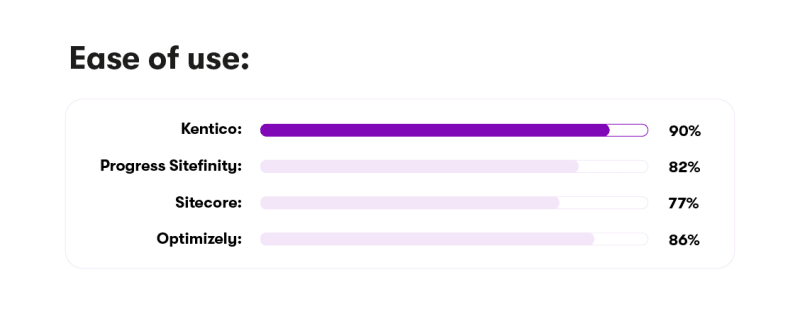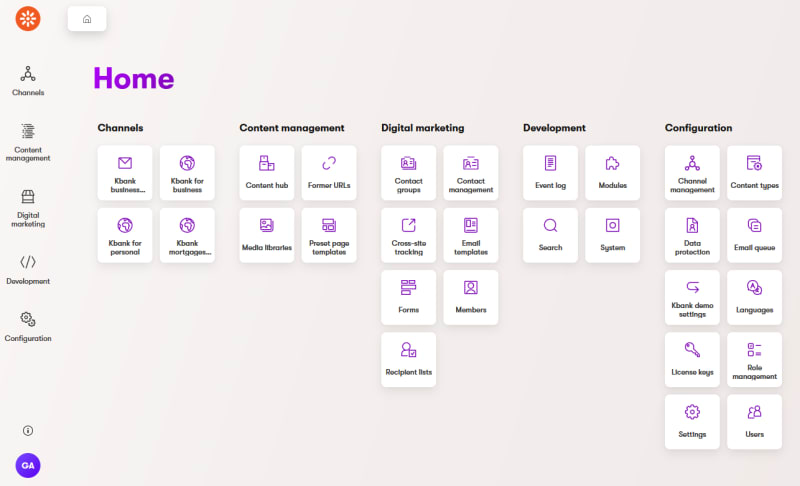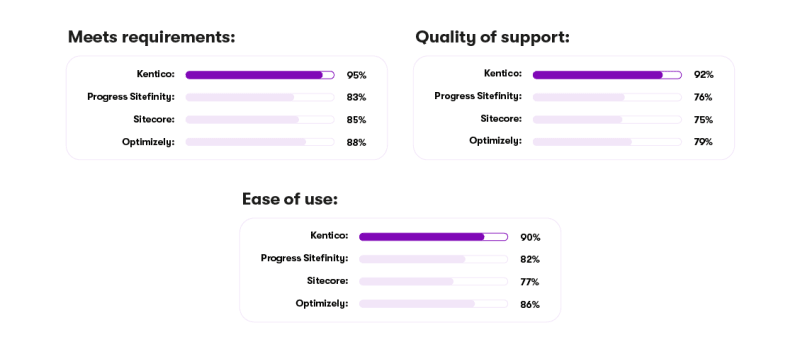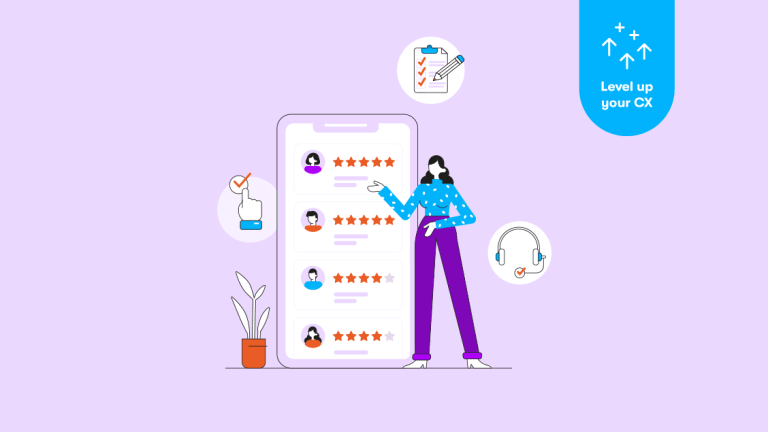A great DXP should be many things. But most importantly, it should enable companies to deliver exceptional and personalized digital experiences to their customers across multiple channels and touchpoints. It should empower businesses to create, manage, and optimize content, automate processes, integrate systems, analyze data, and engage with their audience in a meaningful way.
By providing a unified platform for managing the end-to-end customer journey, a DXP empowers developers to build and deliver innovative digital experiences efficiently and effectively. It enables companies to stay competitive in the digital landscape and meet the evolving expectations of their customers.
So, let’s lift the hood on one of the top DXPs on the market, Xperience by Kentico, to see just what it offers to content editors and developers and what you can expect from the administration interface and backend.
Meeting the needs of content editors
DXP admin interface should prioritize usability, customization, management capabilities, monitoring and reporting, collaboration support, and robust documentation and support to empower administrators in effectively managing and optimizing the digital experience platform.
The most important things for a DXP admin interface to be or have are:
- User-friendly and intuitive: The admin interface should be designed with a user-friendly and intuitive layout, making it easy for administrators to navigate, manage, and configure the DXP. Clear navigation, organized menus, and logical workflows contribute to a positive user experience.

- Comprehensive management tools: The admin interface should offer comprehensive management tools that enable administrators to efficiently handle various aspects of the DXP. This may include content management, user management, permissions and access controls, workflow management, analytics and reporting, and integration management.

The admin interface of Xperience by Kentico
- Customization and flexibility: The admin interface should provide customization options that allow administrators to tailor the interface to their specific needs. This includes the ability to personalize dashboards, rearrange modules, and configure settings based on the administrator's preferences and tasks.
- Real-time monitoring and reporting: The admin interface should provide real-time monitoring and reporting capabilities, allowing administrators to track the performance and usage of the DXP. This includes monitoring user activities, content engagement, system health, and other relevant metrics. Real-time insights help administrators identify issues, make data-driven decisions, and optimize the DXP for better results.
- Collaboration and workflow support: The admin interface should facilitate collaboration and streamline workflows among different teams and stakeholders involved in managing the DXP. This may include features such as task assignment, content review and approval workflows, version control, and communication tools to enhance collaboration and ensure smooth operations.
- Documentation and support: The admin interface should provide comprehensive documentation and support resources to assist administrators in using and troubleshooting the DXP. This includes user guides, tutorials, FAQs, and access to a knowledgeable support team that can address any questions or issues that arise.
Meeting the needs of developers
The most important things for a DXP to be or have for developers are:
- Robust development framework: A DXP should provide a robust development framework that supports modern programming languages, libraries, and tools commonly used by developers. This includes support for popular web technologies like HTML, CSS, JavaScript, as well as integration with common development environments and frameworks.
- Extensibility and customization: The DXP should offer extensibility options that allow developers to extend and customize the platform's functionality to meet specific business requirements. This may include APIs, SDKs, and developer-friendly documentation that provide guidance on how to integrate with the DXP, build custom components, and create tailored experiences.
- Scalability and performance: The DXP should be designed to handle high traffic volumes, large datasets, and demanding workloads. It should offer scalability options that allow developers to scale the platform horizontally or vertically based on the application's needs. Additionally, the DXP should have built-in performance optimization features and caching mechanisms to ensure optimal performance.
- Integration capabilities: A DXP should have robust integration capabilities that enable seamless integration with other systems and third-party services. It should provide APIs, webhooks, and connectors that simplify the process of integrating with external databases, CRMs, marketing automation tools, analytics platforms, and other enterprise systems.
- DevOps and deployment support: The DXP should support modern DevOps practices and provide tools for continuous integration and deployment. This includes features like version control, automated testing, deployment pipelines, and support for containerization technologies like Docker. The DXP should also have deployment flexibility, allowing developers to deploy applications on-premises, in the cloud, or in hybrid environments.
- Developer community and resources: A thriving developer community and comprehensive developer resources are essential for a DXP. This includes forums, documentation, code samples, tutorials, and knowledge bases that developers can leverage to enhance their understanding of the platform and collaborate with peers.
- Security and compliance: The DXP should prioritize security and compliance measures, providing developers with the necessary tools and features to build secure applications. This includes robust user authentication and authorization mechanisms, data encryption, secure APIs, and adherence to industry best practices and regulatory requirements.
By providing a strong development framework, extensibility options, scalability, integration capabilities, DevOps support, a supportive developer community, and robust security measures, a DXP empowers developers to build and deliver innovative digital experiences efficiently and effectively.
Meeting the needs of the business partner
Behind every great product is a great team and that’s no exception at Kentico. But of course, we would say that. So, perhaps it’s better to simply let these scores from the G2 Grid® Report for Digital Experience Platforms (DXP) do the talking.

If you’re interested in what that direction that is, here is our vision for Xperience by Kentico. And here is our roadmap.
Our ebook, “Xperience by Kentico, the future of DXP,” explores our new cutting-edge hybrid-headless digital experience platform that will help you drive better business outcomes with fewer resources using Xperience by Kentico, a hybrid headless digital experience platform (DXP) that minimizes overhead and maximizes ROI by focusing on speed to market and your real needs. Download the free ebook now!

